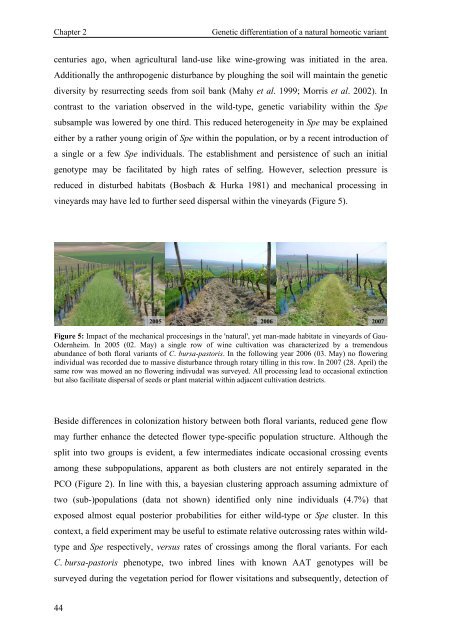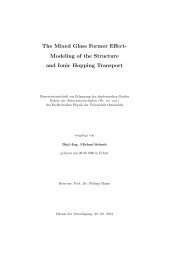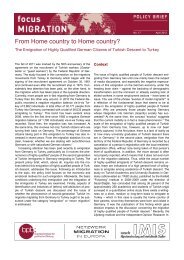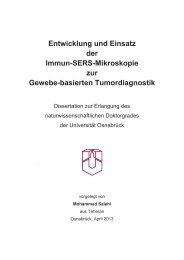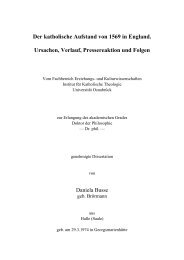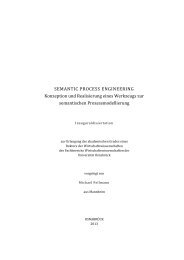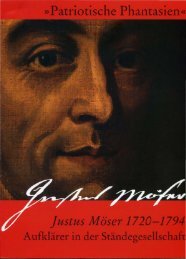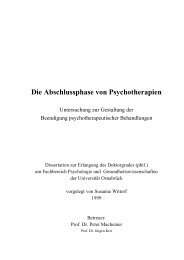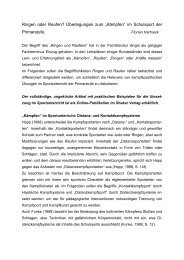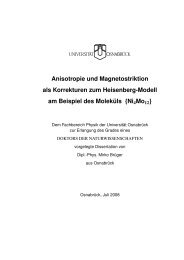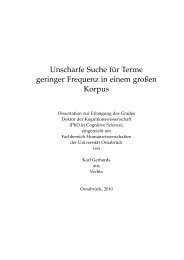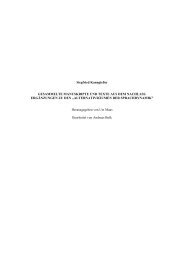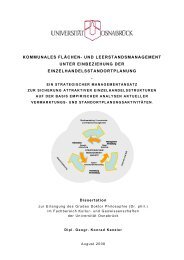'STAMENOID PETALS' IN A NATURAL HOMEOTIC VARIANT OF
'STAMENOID PETALS' IN A NATURAL HOMEOTIC VARIANT OF
'STAMENOID PETALS' IN A NATURAL HOMEOTIC VARIANT OF
You also want an ePaper? Increase the reach of your titles
YUMPU automatically turns print PDFs into web optimized ePapers that Google loves.
Chapter 2 Genetic differentiation of a natural homeotic variant<br />
centuries ago, when agricultural land-use like wine-growing was initiated in the area.<br />
Additionally the anthropogenic disturbance by ploughing the soil will maintain the genetic<br />
diversity by resurrecting seeds from soil bank (Mahy et al. 1999; Morris et al. 2002). In<br />
contrast to the variation observed in the wild-type, genetic variability within the Spe<br />
subsample was lowered by one third. This reduced heterogeneity in Spe may be explained<br />
either by a rather young origin of Spe within the population, or by a recent introduction of<br />
a single or a few Spe individuals. The establishment and persistence of such an initial<br />
genotype may be facilitated by high rates of selfing. However, selection pressure is<br />
reduced in disturbed habitats (Bosbach & Hurka 1981) and mechanical processing in<br />
vineyards may have led to further seed dispersal within the vineyards (Figure 5).<br />
Figure 5: Impact of the mechanical proccesings in the 'natural', yet man-made habitate in vineyards of Gau-<br />
Odernheim. In 2005 (02. May) a single row of wine cultivation was characterized by a tremendous<br />
abundance of both floral variants of C. bursa-pastoris. In the following year 2006 (03. May) no flowering<br />
individual was recorded due to massive disturbance through rotary tilling in this row. In 2007 (28. April) the<br />
same row was mowed an no flowering indivudal was surveyed. All processing lead to occasional extinction<br />
but also facilitate dispersal of seeds or plant material within adjacent cultivation destricts.<br />
Beside differences in colonization history between both floral variants, reduced gene flow<br />
may further enhance the detected flower type-specific population structure. Although the<br />
split into two groups is evident, a few intermediates indicate occasional crossing events<br />
among these subpopulations, apparent as both clusters are not entirely separated in the<br />
PCO (Figure 2). In line with this, a bayesian clustering approach assuming admixture of<br />
two (sub-)populations (data not shown) identified only nine individuals (4.7%) that<br />
exposed almost equal posterior probabilities for either wild-type or Spe cluster. In this<br />
context, a field experiment may be useful to estimate relative outcrossing rates within wildtype<br />
and Spe respectively, versus rates of crossings among the floral variants. For each<br />
C. bursa-pastoris phenotype, two inbred lines with known AAT genotypes will be<br />
surveyed during the vegetation period for flower visitations and subsequently, detection of<br />
44<br />
2005 2006 2007


